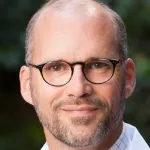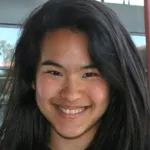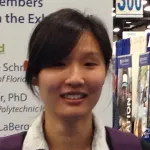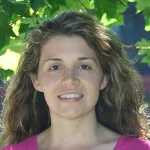
-
 Bio-X Affiliated FacultyDr. Beaulieu's current research interests include: three-dimensional computer graphics representation of, medical imaging data, including clinical applications of virtual, colonoscopy and arthroscopy; interactive MRI evaluation of joint, motion.
Bio-X Affiliated FacultyDr. Beaulieu's current research interests include: three-dimensional computer graphics representation of, medical imaging data, including clinical applications of virtual, colonoscopy and arthroscopy; interactive MRI evaluation of joint, motion. -

Christine Yost - Bio-X Undergraduate Fellow
2012 Undergraduate Summer Research Program ParticipantHome Department: Biology (Honors)
Supported by: The Rose Hills Foundation and Bio-X
Mentor: Dean Felsher, Professor of Medicine (Oncology and Pathology) -

Christine Yeh - Bio-X Undergraduate Fellow
2014 Undergraduate Summer Research Program ParticipantHome Department: Biology
Supported by: Bio-X
Mentor: Sharon Pitteri, Radiology -

Christine Wang - Bruce and Elizabeth Dunlevie Fellow
Bio-X SIGF Graduate Student FellowAwarded in 2014
Home Department: Bioengineering
Faculty Advisors: Fan Yang (Bioengineering and Orthopaedic Surgery), Gerald Grant (Neurosurgery), and Michelle Monje (Neurology) -

Christine Wang - Bio-X Travel Awardee
Awarded in 2014Home Department: Bioengineering
Faculty Advisor: Fan Yang
Talk Title: Comparative study of primary glioblastoma (GBM) and diffuse intrinsic pontine glioma (DIPG) cells from adult and pediatric brain cancer patients cultured in 3D PEG-based biomimetic hydrogel
Event: Biomedical Engineering Society Annual Meeting 2014 -

Christine Tataru - Bio-X Undergraduate Fellow
2014 Undergraduate Summer Research Program ParticipantHome Department: Computer Science
Supported by: anonymous donor
Mentor: Lars Steinmetz, Genetics -

Christine McLeavey - Bio-X Bowes Fellow
Bio-X Graduate Student FellowAwarded in 2009
Home Department: Neurosciences
Faculty Advisors: Scott Delp (Bioengineering, Mechanical Engineering) and Karl Deisseroth (Bioengineering, Psychiatry) -

Christine Liu - Bio-X Undergraduate Fellow
2020 Undergraduate Summer Research Program ParticipantHome Department: Computer Science
Mentor: John Huguenard, Neurology & Neurological Sciences -

Christine Khademi - Bio-X Undergraduate Fellow
2011 Undergraduate Summer Research Program ParticipantHome Department: Biology (Neurobiology)
Supported by: Bio-X
Mentor: Sanjiv Sam Gambhir, Professor of Bioengineering, Materials Sci & Engineering, and of Radiology -

Christine Jacobs-Wagner - Dennis Cunningham Professor and Professor of Biology
Bio-X Affiliated FacultyCellular replication is a defining feature of life. But how do cells reproduce themselves? Dr. Christine Jacobs-Wagner's laboratory addresses this fundamental question by probing the governing principles and the spatiotemporal mechanisms that underlie cellular replication, with an emphasis of cell morphogenesis, cell growth, chromosome dynamics and cell cycle regulation. They use bacteria as model systems for two main reasons. First, bacteria lack the complex control systems of eukaryotes (e.g., cyclin/Cdk machinery); yet their multiplication process is remarkably efficient and faithful.
